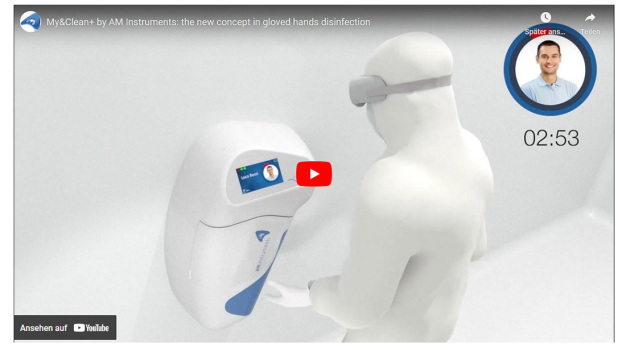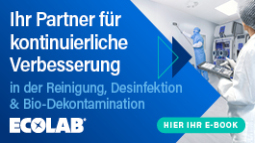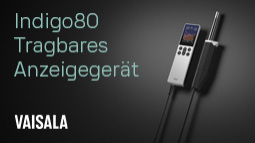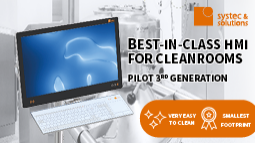- Disinfection | procedures, devices, agents, media (Wipers, Swaps,...)
Is there anything missing in the new Annex 1? From hands disinfection to rapid microbiology
An interview with Tim Sandle (Interview by Cristina Masciola, AM Instruments)
The highest risk within a cleanroom is personnel. Despite this, the new Annex 1 seems to give not enough attention to such an extremely delicate operation as gloved hand disinfection. Human error, its imponderability, and especially the absence of traceability make this a high-risk operation. What is your opinion about this “lack” within the new Annex 1?
Hand disinfection is essential for aseptic working. The essential elements are:
– Frequency
– Coverage
– Time
– The correct disinfectant
With frequency, gloves need to be disinfected before and after each aseptic operation (with the additional requirement in Annex 1 to change gloves after an intervention, one finger dabs have been taken).
It is also important that personnel perform regular glove sanitisation, such as every 10 to 15 minutes even when idle.
With coverage, the application technique is important. The volume should be standardised and it should be sufficient to cover all parts of the glove. The technique used to rub the disinfectant (which is normally 70% IPA) across the palm and fingers is important and this should be well practiced.
In terms of time, as with other forms of disinfection, the contact time is important. Studies show 15 to 30 seconds is necessary to reduce the typically maximum levels of bioburden found in a cleanroom environment.
In gloved hand disinfection, the risk of cross-contamination can be averted through the use of automated devices with specific characteristics. What are they?
There are devices on the market that can make the hand disinfection process more reliable. Such devices, which can also digitally capture data, can control the quantity of disinfectant dispensed and time how long the employee spends undertaking the glove sanitisation step.
In addition, devices can also indicate the expiry of the disinfectant and warn when the solution is running out.
Another advantage is that devices that be position close to where they are needed, to make access convenient for personnel and avoid the need to criss-cross too often, helping with the logical flow which is needed to underpin aseptic operations.
However, even with sophisticated automated devices, personnel still need to be trained in the importance of glove sanitisation and with sanitising their hands at the appropriate time point.
Traceability of hand disinfection is not required in any regulations. Doesn’t this seem a contradiction to the very meaning of the Contamination Control Strategy?
Traceability can be useful for the quality assurance assessment and to provide reassurance for the production manager. This is another area where digital technology can be advantageous. Devices can record how often an individual operator accessed a hand sanitisation station. This can be important to verify, for example, that hands were disinfected prior to performing interventions, as an example.
In the light of your experience, are there, in your opinion, any topics that the new Annex1 has left out or dealt with ambiguously but that you consider essential for maintaining sterility in drug manufacturing?
In terms of things that are missing, the Annex 1 makes many references to ‘risk’ but very few to hazards. Hazards are the elements that if they are sufficiently likely and sufficiently severe, they will lead to unacceptable risks. I think this places the Annex out of alignment with ICH Q9, where ‘hazard identification’ is the important step in order to undertake a risk assessment. This is especially so with ICH Q9 having recently undergone an update to introduce more formality into the risk management process.
With environmental monitoring, while finger dabs and gown plates are now included, swabs remain missing from the text. This makes little sense as swabs are required for narrow and irregular surface monitoring and for sampling critical surfaces like filling needles.
Annex 1 states that environmental monitoring sampling methods and equipment used should be fully understood, with the recovery efficiency of the sampling methods chosen qualified. I prefer: “The recovery efficiency of the sampling methods should be understood.” This is because ‘qualified’ brings with it a level of analytical method validation that becomes challenging for imprecise methods.
For cleanrooms, the minimal differential pressure is defined for adjacent cleanrooms of different grades. However, a minimal air exchange rate for clean rooms is no longer quoted in the text. While this is connected to energy saving, I think that a minimal standard should continue to be set. The old guidance of ~20 air changes provided a point of guidance.
There are some issues that have been downplayed trough the different drafts and towards the publication of the final version of the Annex. For example, there was a greater focus on separative devices, especially with isolators. The importance of separative devices and exclusion personnel should be given more focus in my opinion.
It was also disappointing that the emphasis upon rapid microbiological methods was less strong. As an industry we need to be pursuing better ways to verify the robustness of our contamination control strategy (and in real time).
There is also some ambiguity, such as with many references to “ampoules and vials“. I think the term “primary packaging containers” is better, with a definition. This would acknowledge forms of processing like bow-fill-seal and include any other containers in addition to ampoules and vials, as well.
In the personnel section I questioned the portion of the text that states shoes should be disinfected – I do not think the disinfection of shoes would pass a disinfectant efficacy test; instead I’d recommended the use of captive shoes.
Another ambiguity is with process validation; this could be scoped out. The term process validation is often understood as manufacturing process validation but should be enlarged to all relevant processes in this context. I’d recommend: “process validation including manufacturing, cleaning, decontamination sterilization, transport.”
For personnel movement, with “The use of separate change rooms for entering and leaving the grade B area is desirable.” I support separate routes, but I felt that ‘desirable’ was too vague a term. There were other areas where I think we need tighter language.
With disinfection, the confusing reference to ‘resistant strains’ remains. Here the phrase ”development of resistant strains “is often misinterpreted as development of acquired resistance (a theory which has largely been discredited). We assume the intention of this sentence is to draw attention to recovery of organisms with innate resistance. I’d proposed that the word development be deleted “development”, so that the text changes to read: ‘‘Monitoring should be undertaken regularly in order to show the effectiveness of the disinfection program and to detect the recovery of resistant and/or spore forming strains.”
In terms of water sampling, the Annex states that users should ensure that at least one representative sample is included every day of the water that is used for manufacturing processes. This could be tightened. I felt that for WFI systems a sample at the end of the distribution loop each day that the water is used should also be sampled and tested.
Although I have made some points of criticism, it remains that Annex 1 is a good document and it is a step forwards. The Annex 1 directs us to embrace a holistic, proactive and risk based methodology based on process understanding and risk knowledge and a Quality Risk Management (QRM) approach to contamination control that requires documenting in a CCS.
![]()
AM INSTRUMENTS
Via Isonzo, 1/C
20812 Limbiate (MB)
Italy
Phone: +39 02 8728421
email: info@aminstruments.com
Internet: https://global.aminstruments.com/










